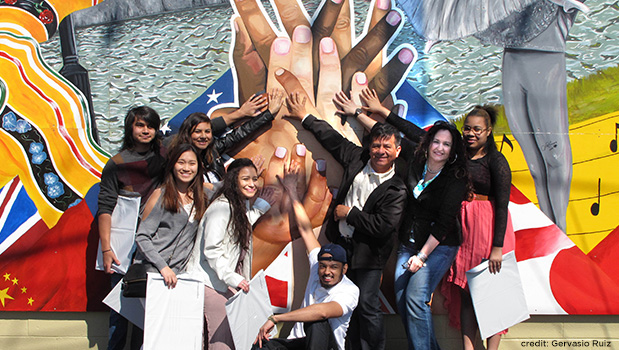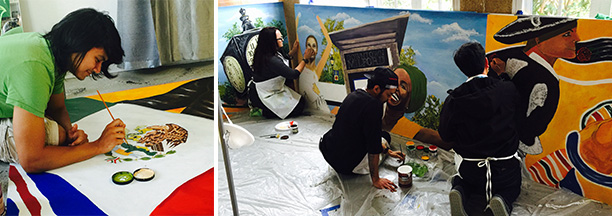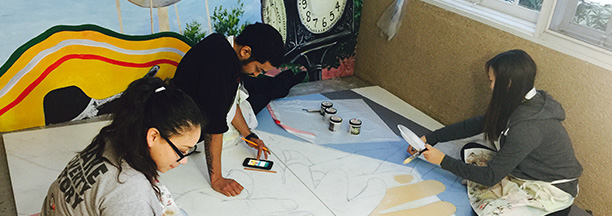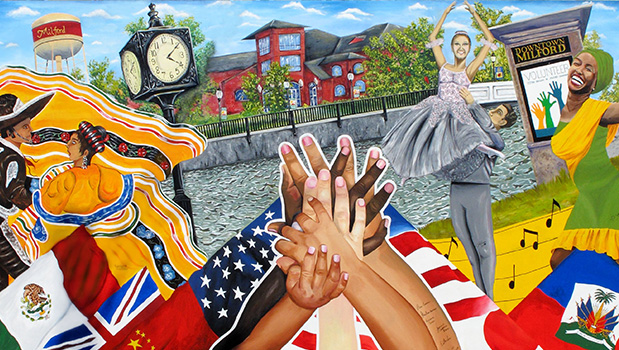Main Spotlight: Connecting, Innovating, and Sustaining a Healthy Main Street Movement
Key takeaways from six sessions at the 2025 Main Street Now Conference.

Marion, Iowa © Tasha Sams
We work in collaboration with thousands of local partners and grassroots leaders across the nation who share our commitment to advancing shared prosperity, creating resilient economies, and improving quality of life.

Emporia, Kansas © Emporia Main Street
Made up of small towns, mid-sized communities, and urban commercial districts, the thousands of organizations, individuals, volunteers, and local leaders that make up Main Street America™ represent the broad diversity that makes this country so unique.

Chicago, Illinois © Main Street America
Looking for strategies and tools to support you in your work? Delve into the Main Street Resource Center and explore a wide range of resources including our extensive Knowledge Hub, professional development opportunities, field service offerings, advocacy support, and more!

Waterloo, Iowa © Main Street Waterloo
Your one-stop-shop for all the latest stories, news, events, and opportunities – including grants and funding programs – across Main Street.

Kendall Whittier — Tulsa, Oklahoma © Kendall Whittier Main Street
Join us in our work to advance shared prosperity, create strong economies, and improve quality of life in downtowns and neighborhood commercial districts.

Recently, the small city of Milford, Delaware has become home to an increasing number of immigrants from Haiti and Central America. The local Main Street organization, Downtown Milford Inc., is trying to address these shifting demographics by creating a more inclusive sense of community.
Part of Downtown Milford Inc.’s strategy is to redefine Milford as a diverse community by celebrating and embracing cultural differences. Community engagement was the first and most important part of this initiative. Therefore, the diversity initiative started by asking questions about community through surveys, local business owner interviews and discussions with partner organizations. These conversations led to several different projects throughout the year but the biggest undertaking was a 24 by 12-foot mural installed on the outside of a downtown restaurant.
Public art can do much more then beautify a downtown. It can provide an opportunity for culture and community to interact. The We Are Milford Mural is a visual representation of a new community identity, one that encompasses far more cultures and backgrounds then before but still embodies the city’s slogan ‘River Town, Art Town, Home Town’. The 288 square foot mural features town landmarks, such as the Mispillion river and Milford Water Tower, as well as music and dancers from different cultural backgrounds. The project takes its title for the #WeAreMilford hashtag that is used on social media at community events. In the past, people have faced criticism for using the hashtag at events that have not been viewed as inclusive. Using ‘We Are Milford’ as the title of the mural allowed us to address those criticisms and assert that Downtown Milford Inc. vision of community as one that is both diverse and inclusive.

Student Christian Barron; Artists Lori Conner, DeMarcus Shelborne and Gilberto Rodriguez
The process of making the mural was just as important as the final product. From the beginning the mural was a collaborative project engaging local artists, main street businesses, community leaders and youth. In recruiting volunteers for the project we made sure that those involved reflected the town’s diversity. We first contacted the local Mispillion Art League for guidance. With their help found two of the three muralists, Lori Conner and Gilberto Rodriguez, and were lucky enough to stumble upon the third, DeMarcus Shelborne, while doing outreach for a different project.
The next step was to find funding for the three-thousand-dollar project. Using just her community network, one of our committee members, Irma Barriga was able to meet our funding goals by reaching out to local businesses for financial support and in kind donations. The last step was to find student apprentices. We worked with local art teachers to
recruit six talented young student artists from Milford High School.

Students Jasmine Castaneda and Esther Lee work with artist DeMarcus Shelborne
The most difficult part of the project was finding a place for the mural, a wall that was both centrally located and visible to anyone walking, biking or driving through town. Several walls which would work were identified, but only one of the business owners we contacted was as excited about the project as we were. Local restaurant owner, Ramsey Schrader put his full support behind the project and allowed us install the mural on the outside of his restaurant.
It took 8 months to go from an idea to a completed mural. The mural was painted on 9 panels of plywood in our small main street office. Artists and students had to work in shifts. Towards the end of the project, when time was running out they stayed late nights to finish the mural on time. The incredible amount of time and effort that went into the project created friendships and a sense of community.
There was excitement and support for the project from the whole community. Regular updates on the mural’s progress were shared with residents through social media and the local press. People often came by the office to look at the mural and meet the artists. At the unveiling on April 10th over 100 people came to see the mural for the first time.

We Are Milford Mural; photo by Gervasio Ruiz
Using public art as a catalyst, Downtown Milford Inc. attempted to engage as many people as possible from different backgrounds in one conversation about who we are as a community and what we value. Most of the artists, students and major donors involved in the mural project had never been asked to be involved in Main Street activities before. The mural provided an opportunity to attract new volunteers and build relationships as well as a create a sense of pride around culture and community in Milford. Redefining Milford as a city which embraces and celebrates diversity will take much more than one project but the overwhelmingly positive feedback from many residents about the We Are Milford Mural makes me believe that an important change has started in Milford.
For more information about the We Are Milford Mural Project, including interviews with the artists, visit http://downtownmilford.org/events/milford-strolls/muralproject/.
Noa Julia Kornbluh is completing a year of service as an AmeriCorps VISTA with the Delaware Economic Development Office’s Downtown Delaware program. Her focus is on expanding community outreach for Milford, Delaware’s Main Street organization, Downtown Milford Incorporated.